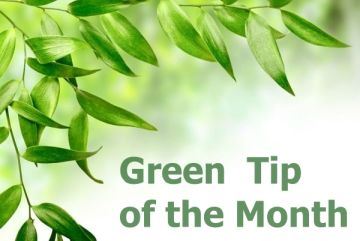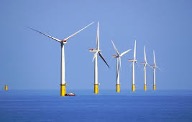|
|
Understanding Green Energy
Green energy is produced exclusively from a renewable energy source, for example from wind, solar, tidal, geothermal, bio and hydro energy sources, and not by burning fossil fuels which are not renewable and release carbon dioxide into the atmosphere. Fracking releases methane gas, which is a fossil fuel. Nuclear power stations are not classed as green energy sources, even though they do not burn fossil fuels.
Walney Island Offshore Wind Farm near Morecambe Bay (geography.org.uk 2391702) |
Solar Plant in East Sussex (Lightsource BP) |
Biomass energy - a grey area Biomass energy comes from burning plant material and is officially classed as a green energy source in the UK. This is because, although it releases carbon dioxide when burned, new plants take in carbon dioxide as they grow. The important thing is that the sources are sustainably managed. The main worry at present, though, is that large power stations, such as Drax, import wood pellets from the USA or Canada and there is high fossil fuel consumption in transporting them by ship. Also, the forests may take decades to grow again and absorb carbon dioxide from the atmosphere. |
Green energy in your home
Maybe you already obtain your electricity from a green energy supplier - or are thinking of doing so in the future? If so, you may be tempted to think that what comes into your house is pure 'green' electricity generated from one of the green energy sources. This is not the case. Electricity, no matter how it is generated, is the same. An electric current is simply a flow of electrons in a wire. It is impossible to distinguish between electricity from different sources - you cannot 'sort' electricity. The term 'green energy' describes how electricity is generated - not the electricity itself.
The electricity from green sources is fed directly into the National Grid, so the energy you receive comes from a whole variety of sources. It would be impractical to supply just electricity from green sources to consumers. This would require building a new distribution network with its own National Grid with separate power lines and pylons etc. The hope, of course, is that the present National Grid will become a 'green energy' grid in the not-too-distant future.
In the UK, the amount of energy from renewable sources is increasing year by year. For the first 3 months of 2020, renewable energy made up 47% of UK energy generation.
So how does a green energy supplier operate?
The supplier promises to buy, or produce, a quantity of green energy to correspond to your consumption and feed it into the National Grid. This means that the money you pay for your electricity is used directly to finance green energy.
But not all suppliers are equally committed to the energy transition, and you do need to read their promises carefully. For example, some have their own production sites, while others are content to buy certificates of origin and still operate fossil fuel production plants.
The following site is helpful in understanding the difference between suppliers and deciding which are the better ones.
https://energysavingtrust.org.uk/home-energy-efficiency/switching-utilities/buying-green-electricity
The site recommended the following suppliers in February 2020 as clearly listing the renewable sources of their energy on their websites and as having good green tariffs.
- Good Energy (https://www.goodenergy.co.uk/our-energy/)
- Green Energy UK (https://www.greenenergyuk.com/OurEnergy)
- Ecotricity (https://www.ecotricity.co.uk/about-ecotricity/our-eco-credentials/our-environmental-footprint)
Select or click here for previous Green Tips.
You are here >>>>> |
|



